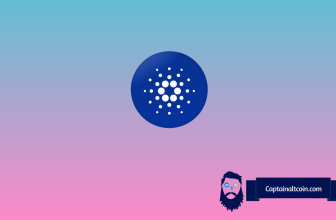
XRP, the third largest cryptocurrency by market cap but first by amount of hate it gets, enjoys another official bank endorsement: Euro Exim Bank in London. This has been reported by the AmericanBanker.com today.
This European bank is about to announce on Tuesday that it has plans to start using XRP and Ripple’s xRapid software as an answer to the liquidity and visibility shortcomings of the current international banking networks.
“There’s been a lot of talk around the markets about how blockchain technology can assist in trade finance,” said Graham Bright, head of compliance and operations at the bank. “We’re interested in moving forward and creating a platform for payments for our clients who are in over 80 countries at the moment, making sure they have a smooth, frictionless way of paying local people.”
As americanbanker.com explains, currently, if a U.S. bank wants to send a payment to another country, it has to keep money on deposit at a nostro account at a correspondent bank in that foreign country. The funds in the account are used to settle the payment, which is directed by a message sent over the Swift network. (When a bank doesn’t have a direct relationship with a bank in another country, it uses correspondent banks as intermediaries through which the payment instruction “hops.”)
Ripple’s advantages
SWIFT network is more than 50 years old and is far from suitable for today’s modern age as one Ripple customer, Cuallex, a U.S.-based payment company that sends payments to Mexico confirms. Ever since starting to use xRapid, their process has been significantly cheaper and simpler as they no longer need to pre-book funds in Mexican pesos and hold them there days in advance.
“With the fluctuations in value peso to dollar, that is a high-risk method,” Treacher said. Now Cuallex holds funds onshore in U.S. dollars.
Ripple sparked Euro Exim Bank’s interest back in October, after their executives took part at the Swell conference held in San Francisco.
“We realized the type of companies there were very forward thinking in the innovation they were putting in place,” Bright said. “We saw the technology would let us easily and quickly originate payments without having bilateral relationships.”
The bank also emphasized the importance of the transparency and easy audits of everything happening on the network.
“That visibility is so important,” Bright said.
For comparison, Breight noted a case his bank has to go through with the incumbent system – a payment instruction has been sent to another bank on Dec. 29 across the Swift network and bank still didn’t know where it was.
Where and how to buy Ripple’s XRP token?
“It was lost somewhere in the quagmire of a central organization and we have no visibility on where it is,” said Bright, who worked at Swift for 20 years. All the counterparty says is, ” ‘We’ve not received your message.’ ”
RippleNet is not only more transparent and auditable but also outstandingly quicker than incumbent solutions as it can process 1,500 transactions per second. Swift’s network is store-and-forward, so transactions can take a day or more to execute.
In trade finance, where large amounts of goods sit at ports while buyers wait for them, being able to execute payments within a few minutes will make a big difference in some locations, Bright said. Several Euro Exim Bank clients are “almost desperate to make sure this can work,” he said.
Euro Exim Bank plans to start using XRP in cross-border payments in the first quarter of this year. It hopes to not only be the first bank to use XRP and xRapid in cross-border payments, but to help other banks take the same path.







